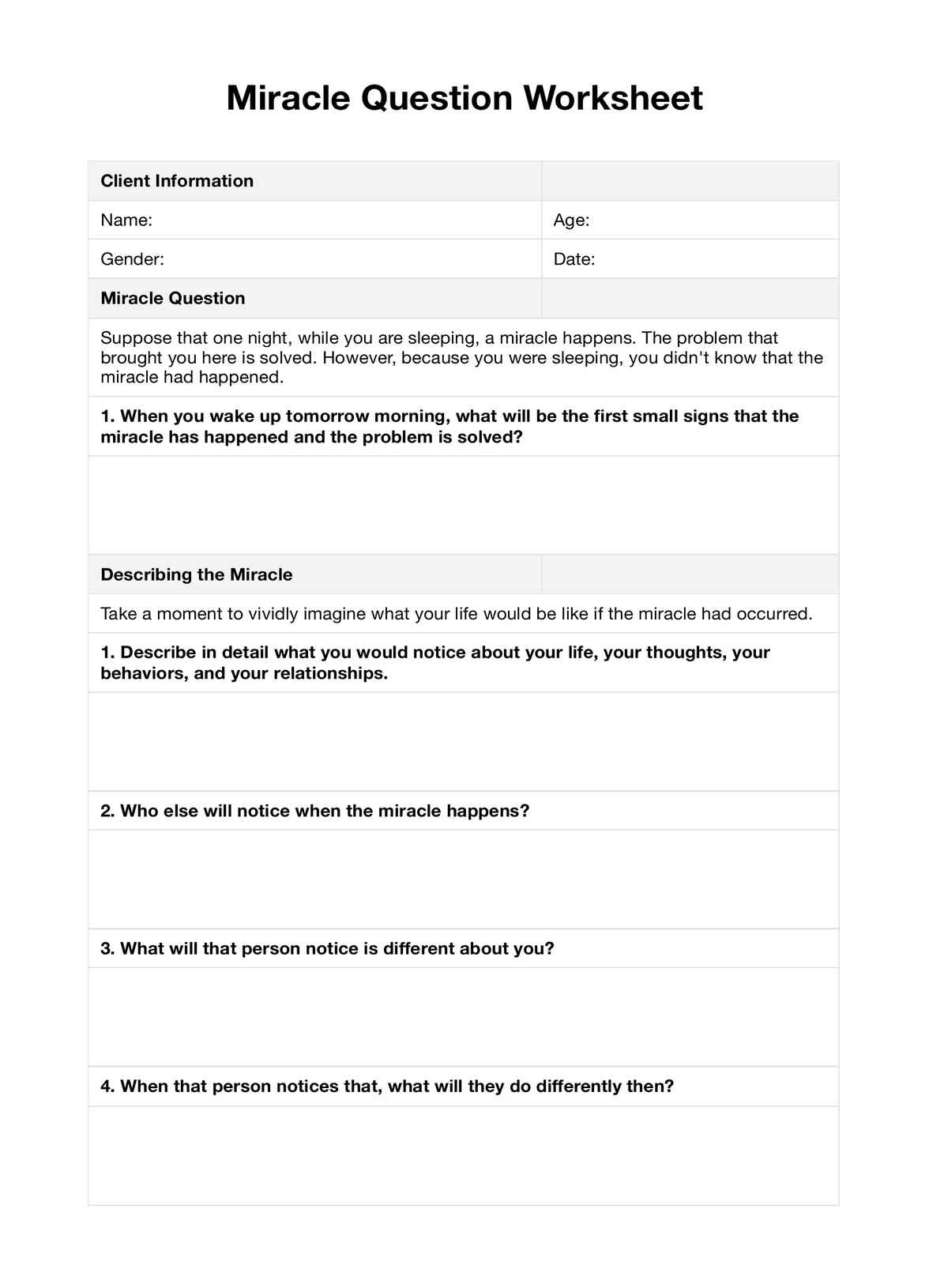As clients describe how the miracle occurred, they often highlight their skills, capabilities, and resources that could help them achieve their desired future, which the therapist can then amplify and build upon to create a sense of hope and motivation.

Miracle Question Worksheet
Use a helpful tool when practicing solution-focused therapy to engage and build motivation among clients. Download your free PDF here.
Miracle Question Worksheet Template
Commonly asked questions
The therapist should ask follow-up questions, explore the answers in-depth, help the client develop achievable steps toward their goals, and use the insights from their response to inform the therapeutic process.
If a client struggles, the therapist can help by breaking down the question, especially about how the miracle happened, into smaller, more manageable questions or exploring the resistance, which can provide valuable therapeutic material. The therapist can also provide examples or prompts as a guide to formulate their answer.
EHR and practice management software
Get started for free
*No credit card required
Free
$0/usd
Unlimited clients
Telehealth
1GB of storage
Client portal text
Automated billing and online payments











